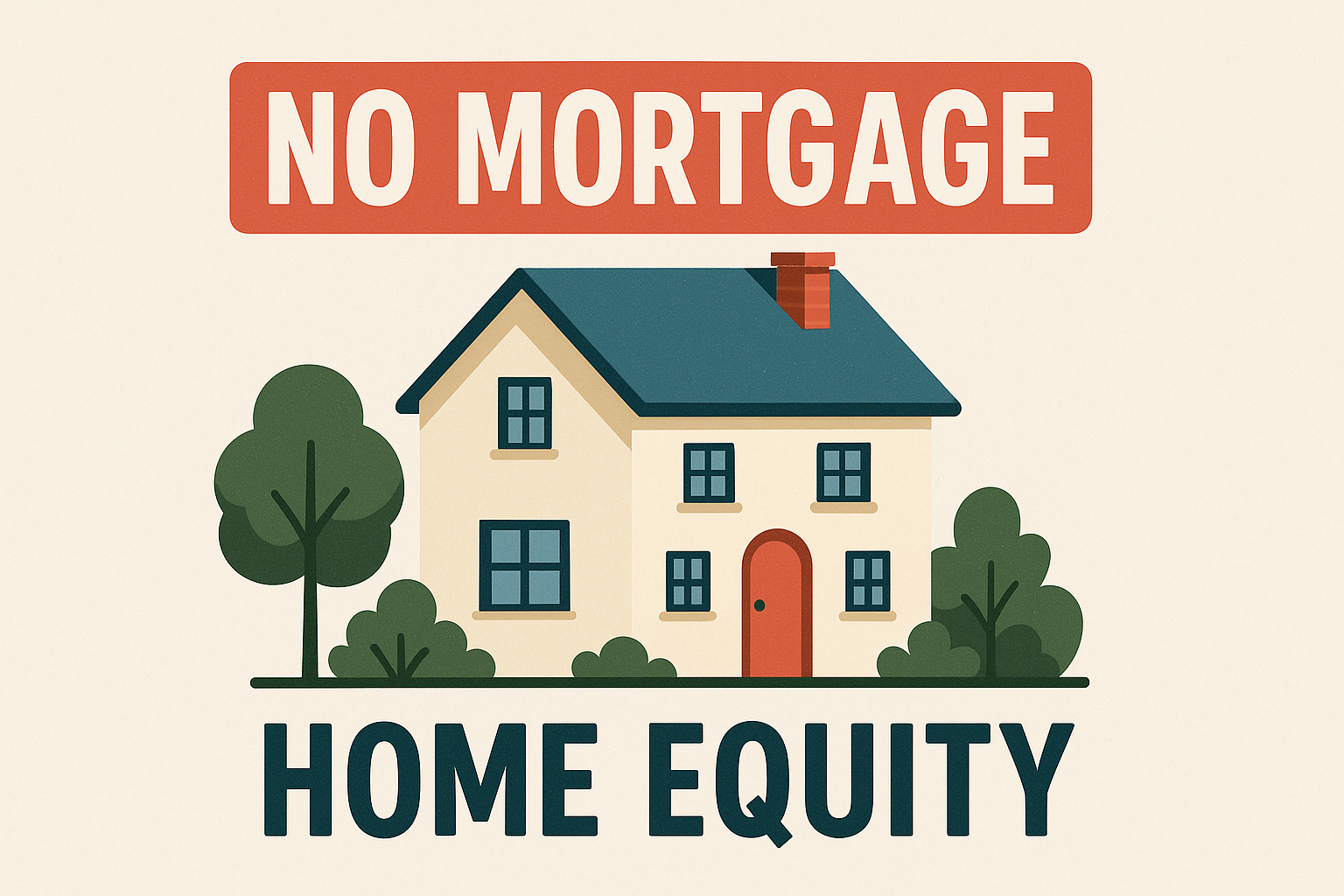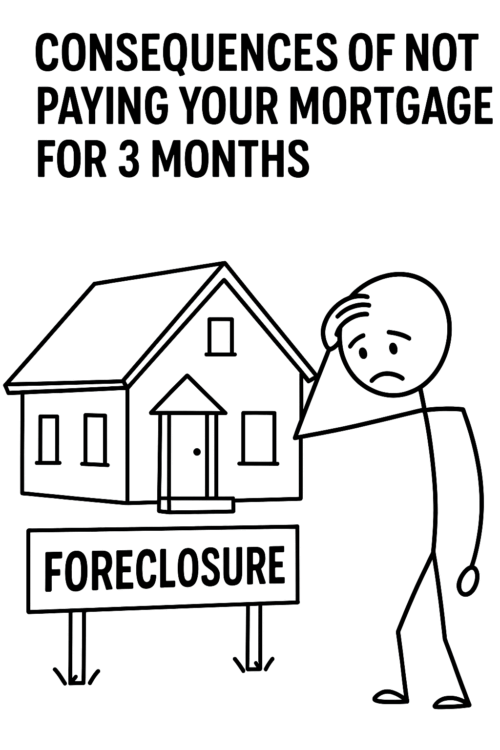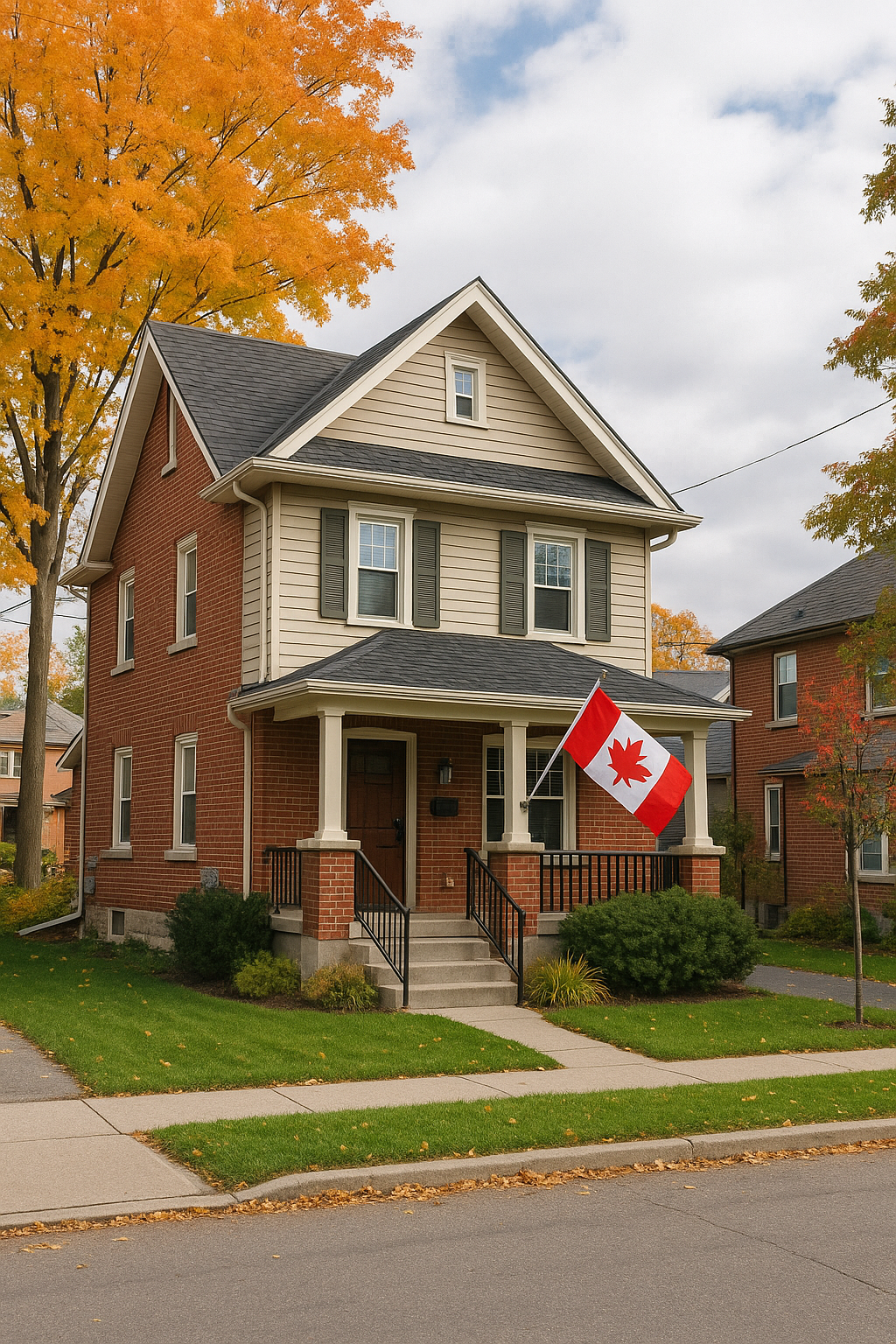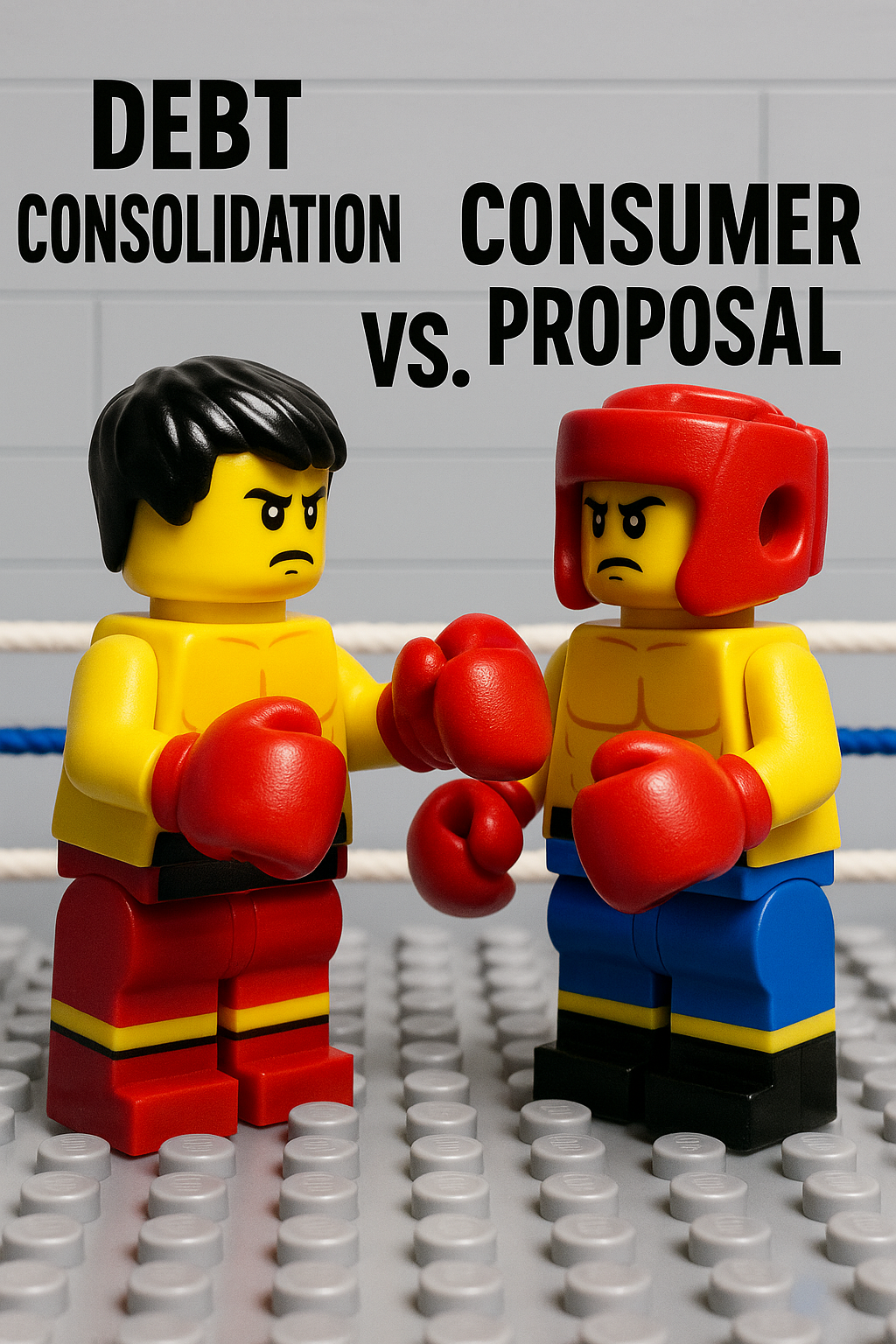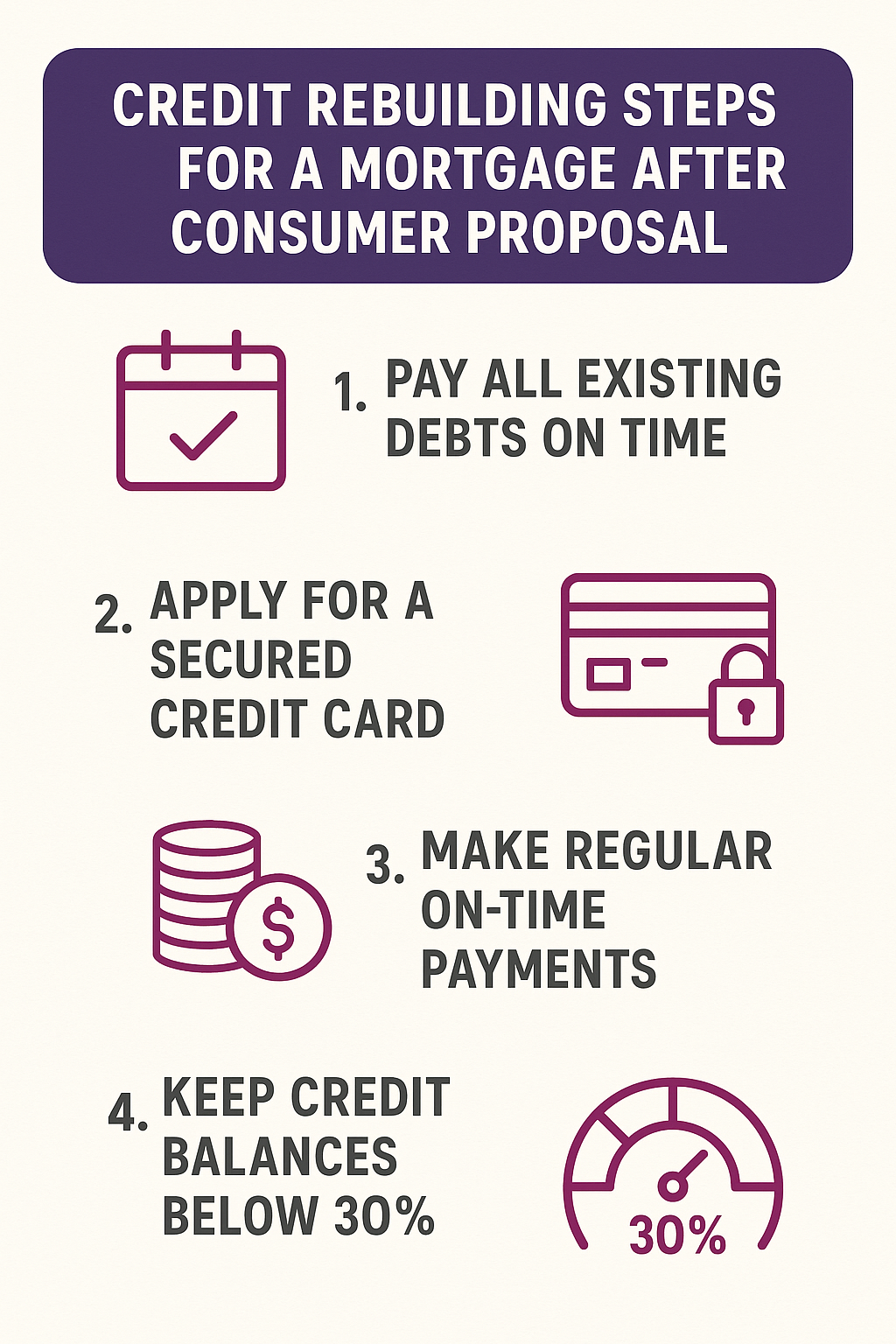If you own your home outright with no mortgage, you have options. That equity you’ve built isn’t just sitting there—it can be used to your advantage. Whether you need funds for renovations, debt consolidation, or unexpected expenses, lenders see a mortgage-free property as strong security. You may qualify for financing like a home equity loan, HELOC, or even a new first mortgage—and that’s true even if you’re dealing with bad credit, low income, or are self-employed.
Table of Contents
ToggleUnderstanding What It Means to Own Your Home Free and Clear
-
When you own your home with no mortgage, you have 100% equity.
-
That equity is an asset you can tap into for financing.
-
Common reasons Canadians borrow against their homes:
-
Debt consolidation
-
Home renovations
-
Emergency expenses
-
Investment opportunities
-
Mortgage and property tax arrears
-
Key takeaway: A mortgage-free home opens up powerful borrowing opportunities.
Borrowing Options Available to Mortgage-Free Homeowners
Home Equity Loan
-
Lump-sum loan secured by your home’s equity
-
Typically fixed rates and terms (1–2 years)
-
Interest-only or amortized payments per month
Important to note: A home equity loan is often used to consolidate higher-interest debts or repay arrears.
Home Equity Line of Credit (HELOC)
-
Revolving credit with a limit based on your equity
-
You can draw, repay, and reuse funds as needed
-
Interest-only payments are possible
- Lump sum payments are possible
Common myth: You need excellent credit for a HELOC—many lenders offer HELOCs even with bruised credit, especially if you have strong equity.
First Mortgage (New Registration)
-
Even though you’re mortgage-free, lenders call it a “first mortgage”
-
Funds are registered against your home like a typical mortgage
-
Can be fixed or variable
📋HELOC vs Home Equity Loan vs First Mortgage
| Feature | HELOC | Home Equity Loan | First Mortgage |
|---|---|---|---|
| Payment Type | Interest-only option | Fixed payments | Fixed or variable |
| Access to Funds | Revolving | One-time lump sum | One-time lump sum |
| Credit Needed | Moderate | Moderate to low | Depends on lender |
| Best For | Flexibility | Debt consolidation | Larger long-term loans |
Who Can Qualify—Even With Bad Credit or Irregular Income
Borrowing With Low or No Income
Lenders typically require proof of stable income (an alternative is prepaid payments) to ensure you can make your monthly payments. But not everyone has a traditional income. If you’re self-employed, retired, or working seasonal or contract jobs, you may not have pay stubs or consistent T4s.
In these cases, some lenders accept:
-
Stated income (you declare your average monthly earnings)
-
Bank statements (to show consistent deposits)
-
Pension or investment income for retirees
-
Government assistance or child tax benefits (if consistent)
Lenders offering these flexible options often include alternative (B) lenders and private mortgage lenders who cater to clients with irregular income profiles.
Important to note: You may pay a slightly higher interest rate, but approval is still possible when equity is strong.
Using a Co-Signer
If your income is too low or your credit is too damaged to qualify on your own, a co-signer can help. This person—usually a family member—legally agrees to take on responsibility for the loan if you can’t repay it.
A strong co-signer should:
-
Have a credit score of 650+
-
Show stable employment or consistent income (pension, salary, etc.)
-
Have low personal debt to avoid affecting their own loan-to-income ratio
-
Ideally, be a homeowner themselves (though not required)
A qualified co-signer can help you secure financing with an institutional lender and may even help you get a better rate.
Key takeaway: Having equity means flexibility, even when traditional banks say no.
How Much Can You Borrow Against a Mortgage-Free Home?
-
Most lenders will allow you to borrow up to 80% of your home’s appraised value
-
Calculation:
-
Home Value: $700,000
-
80% = $560,000
-
Minus Existing Mortgages: $0
-
Potential Loan = $560,000
-
Checklist: What Lenders Look At
-
Property location and condition
-
Credit profile (optional for private lenders)
-
Income verification or equity-only option
-
Purpose of funds
-
Appraised value
The Process—How to Borrow If You Own Your Home With No Mortgage
Step-by-Step Guide
-
Speak to a mortgage professional to explore options
-
Provide identification and a property tax bill
-
Get an appraisal or automated valuation if available
-
Choose between a HELOC, equity loan, or first mortgage
-
Sign legal documents and get the funding you need
Common mistake: Waiting too long when you need funds—approvals can take a few days to a couple of weeks, depending on your situation.
Selling Your Home to Access Equity
If you own your home with no mortgage but aren’t interested in borrowing against it, another option to unlock your equity is to sell the property outright.
Selling your home allows you to access 100% of its market value, minus any associated selling costs.
This can make sense if:
-
You’re downsizing to a smaller or more affordable property
-
You’re relocating to another city or province
-
You no longer want the responsibilities of homeownership
-
You prefer to have a large sum of cash on hand rather than a loan
Key takeaway: Selling your home can be a smart move—especially if your current property no longer suits your needs or is expensive to maintain.
Costs to Consider When Selling
Before you sell, it’s important to understand the true cost of unlocking your equity this way.
Here are common expenses:
-
Realtor commission fees: Usually 4–6% of the home’s selling price
-
On a $700,000 home, that’s $35,000–$42,000
-
-
Legal fees: Approximately $1,000–$2,000
-
Moving costs: Can range from $1,500–$5,000+, depending on distance and volume
-
Staging and minor repairs: Optional but often recommended to get top dollar
While selling gives you access to all your home’s value, you also give up ownership. If you plan to rent or move in with family afterward, this may be an effective strategy. But if your goal is to stay in your home, borrowing against your equity might be the better long-term option.
Common mistake: Forgetting to factor in closing costs and realtor commissions when calculating the net proceeds from the sale.
Pros and Cons of Borrowing Against a Paid-Off Home
Pros:
-
Access to large sums at lower rates than unsecured loans
-
Keep ownership of your home
-
Flexible use: debt, upgrades, emergencies, etc.
Cons:
-
Risk of losing the home if payments are missed
-
Legal and appraisal costs
-
Possible penalties for early repayment
Important to note: Always consult a mortgage expert and review the terms in full.
Example—Using Equity to Improve Cash Flow
Jason in Sudbury owned his home with no mortgage. Facing rising credit card debt, he secured a home equity loan for $150,000 at 9.5%—far less than his cards at 19%. He paid off debt, lowered monthly payments by $1,200, and used the extra cash flow to grow his landscaping business.
Final Thoughts: Own Your Home Outright & Borrow
Owning your home with no mortgage puts you in a powerful position. You’ve built equity—and that equity can be a lifeline when you need access to cash. Whether you’re considering a home equity loan, a HELOC, or a new first mortgage, there are flexible borrowing solutions available to you. Even if your income is limited or your credit isn’t perfect, options still exist.
The key is to work with a mortgage professional who understands your situation and can guide you to the right lender. When used wisely, borrowing against your home can help you protect your financial stability and take control of your next move.
FAQ Section
Q: Can I borrow against my home if I have bad credit?
A: Yes. Many alternative and private lenders in Canada focus on home equity rather than credit score. As long as you own your home with no mortgage, there’s a strong chance of approval.
Q: How much can I borrow against my home?
A: Typically, lenders allow up to 80% of your home’s value. If your home is worth $500,000, you could access up to $400,000 depending on lender guidelines.
Q: What’s the difference between a HELOC and a home equity loan?
A: A HELOC is revolving credit—you can draw and repay as needed. A home equity loan is a lump sum with fixed payments.
Q: Do I need to show income to qualify?
A: Not always. Some lenders allow stated income, especially if you’re self-employed or have strong equity.
Q: What if I need the money fast?
A: Private lenders can fund within days, especially if you already have documents like a property tax bill and ID.
No Mortgage? Looking to Borrow
- Skip a Mortgage Payment? Here’s What Canadian Homeowners Should Know - September 26, 2025
- Using Equity Without Refinancing Safely Borrow in Canada: 3 Key Ways - September 18, 2025
- Mortgage Approval with Child and Spousal Support Income Explained - September 1, 2025
